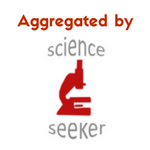Silvio Tiziani, MBA, GAICD, is the CEO of CCRM Australia, leading efforts to bridge the gap between research and industry in regenerative medicine. With extensive experience across academia, health, and industry, he has successfully developed strategic partnerships, secured funding, and driven commercialization initiatives. Previously, he held senior leadership roles at Monash University’s Australian Regenerative Medicine Institute and the Victorian Institute of Forensic Medicine, where he managed major operational, policy, and strategic developments. Silvio holds a Master of Business Administration from Monash University and a Bachelor of Science from Swinburne University and is a member of the Australian Institute of Company Directors (GAICD).
Since its establishment, CCRM Australia has been purpose-built to address a persistent and well-documented challenge in Australia’s health and medical innovation landscape, namely, the translation of early-stage research into commercial and clinical outcomes. Our mission is squarely focused on closing the gap between discovery and delivery, particularly in the complex and high-potential field of advanced therapies, including cell and gene therapies, and the manufacturing platforms that enable them.
In a short space of time, we’ve engaged across Australia and internationally to support a wide range of organizations, from start-ups and research institutions to multinational companies and governments, all working to bring next-generation therapies to market. Through that work, we’ve developed a set of clear lessons about what is working, what is still lacking, and what will be required if Australia is to remain competitive on the global stage.
- Being a not-for-profit with a commercialization mandate is a strategic asset
One of the most important decisions made in establishing CCRM Australia was to operate as a not-for-profit organization with a tightly defined commercialization focus. This structure has proven to be more than just a legal or governance decision; it has become central to our ability to build trust, deliver impact, and act with flexibility across different stakeholder groups.
Because we are not driven by a requirement to deliver short-term financial returns to shareholders, we can take a longer-term view, one that puts the national interest and sectoral development at the centre. We work to de-risk early-stage technologies, making them commercially attractive, without trying to control intellectual property (IP) or extract value prematurely. This has enabled us to build trusted relationships with researchers, small and medium-sized enterprises, funders, and governments, all of whom recognize the value of a mission-aligned, independent intermediary.
Our commercialization mandate ensures that we remain disciplined and pragmatic. Every project we support is assessed through the lens of whether it can be translated into a viable commercial product or service. But we operate with a systems mindset – focused not just on individual success stories, but on building infrastructure, capability, and confidence across the entire ecosystem.
This duality – mission-driven but commercially focused – has been key to our early traction. It has also reinforced a foundational principle that guides our work: a rising tide lifts all boats. When the broader ecosystem is strengthened, all participants benefit, from researchers and early-stage companies to investors, manufacturers, clinicians, and ultimately, patients.
- Purposeful ecosystem building is critical to sector success
From the beginning, CCRM Australia has deliberately taken an ecosystem-building approach. We believe that meaningful commercialization outcomes are not achieved in isolation – they require an environment that brings together the right capabilities, infrastructure, partners and capital, at the right time.
In addition to supporting organizations across all Australian states and territories, our international engagement includes companies, research institutions and stakeholders from:
- Canada, China, France, Germany, India, Ireland, Israel, Japan, Malaysia, Singapore, South Korea, Sweden and the United States
Through these relationships, we have advanced projects and initiatives that:
- Attract increased international participation into Australia’s advanced therapies sector;
- Facilitate access to local research infrastructure for domestic companies and global collaborators;
- Enable international research and commercial partnerships for Australian innovators;
- Help Australian companies and researchers secure funding for R&D and clinical translation;
- Coordinate local and international investment into platform technologies and manufacturing capacity;
- Increase global exposure and client pipelines for Australian service providers; and,
- Develop workforce capability through internships, placements and training programs.
These activities are mutually reinforcing. By connecting local capability to global opportunity, we not only expand Australia’s commercial footprint but also raise the bar on performance, quality and competitiveness.
And once again, the rising tide applies: Initiatives that attract international partners, funding, and projects into Australia inevitably create more opportunities for local organizations. They bring in new ideas, new standards, and new routes to market – lifting the whole sector in the process.
- Local momentum can catalyze national transformation – the SMART CRC example
One of the most powerful demonstrations of ecosystem-building in action is the development of the Solutions for Manufacturing Advanced Regenerative Therapies (SMART) Cooperative Research Centre (CRC). CCRM Australia played a key role in initiating, shaping, and securing this bid, alongside the University of Queensland, which will host the SMART CRC and lead its implementation.
The SMART CRC is a nationally significant initiative that will address the current fragmentation and underinvestment in Australia’s advanced therapies manufacturing landscape. The centre will focus on building the sovereign capabilities required to support the commercial production of regenerative therapies at scale, and to enable faster, more efficient pathways from R&D to clinic.
The final funding raised for the SMART CRC represents one of the strongest public-private coalitions seen in the health innovation space:
- 63 partners, comprising 50 industry and government organizations and 13 academic institutions;
- A$173.2 million committed from partners, including A$58.6 million in direct cash contributions;
- An additional A$65 million from the Australian Government’s CRC Program; and,
- Total funding pool of A$238.1 million, including both cash and in-kind contributions.
Operations will begin in the second half of 2025, with the SMART CRC expected to deliver impact across several key domains:
- Strengthening industry competitiveness by enabling scale-up and quality manufacturing;
- Boosting sovereign manufacturing resilience in an increasingly fragile global supply chain landscape; and,
- Developing a highly skilled workforce, tailored to the needs of advanced biomanufacturing.
The SMART CRC will become a platform for national coordination, bringing together cutting-edge research, clinical translation, and commercial-scale manufacturing under a single, strategic umbrella. It will also play a central role in ensuring that the Australian advanced therapies sector has the tools, talent, and technical infrastructure needed to compete globally.
- Global connectivity accelerates local impact
Our role as the Australian node in the international CCRM network has delivered real and measurable benefits. Our partnership with CCRM Canada, one of the world’s leading organizations in the commercialization and manufacturing of regenerative medicine, has given us access to deep technical expertise, operational frameworks and strategic insights.
Rather than building everything from the ground up, we have been able to draw from proven models and adapt them to the Australian context. This has helped us move faster, make smarter decisions, and embed global best practices into our core operating model.
Importantly, it has also lifted expectations. By benchmarking ourselves against leading global players, we’re able to challenge outdated assumptions and accelerate the adoption of more ambitious commercialization strategies.
- Workforce, infrastructure and investment – the trifecta of long-term growth
As we look ahead, three pillars are emerging as central to Australia’s long-term competitiveness in the advanced therapies sector:
- A future-ready workforce, equipped with the skills to operate in complex GMP environments, manage regulatory demands, and navigate international markets;
- Fit-for-purpose infrastructure, including process development labs, clinical-grade manufacturing facilities, and digital platforms to support product development; and,
- Sustainable investment mechanisms, capable of supporting early de-risking, capital-intensive development and scale-up.
CCRM Australia is actively working across all three fronts – convening partners, supporting policy development, and co-investing in infrastructure and talent initiatives.
Through our internship and training programs, we are directly contributing to workforce development and ensuring that students, graduates, and early-career professionals are embedded in real-world projects and learn from experts across the CCRM network.
We are also exploring innovative funding models, including blended capital approaches and manufacturing access funds, that help early-stage companies overcome the financial barriers to translation.
Final Reflections
The early lessons from CCRM Australia are clear: successful commercialization in health and medical technologies requires more than great science. It demands trusted partnerships, strategic infrastructure, global connectivity, and a system-level commitment to capability-building.
We are proud of the role we’re playing, not just in delivering individual project success, but in shaping a national platform for sustainable, long-term growth. The momentum we’ve built is already paying dividends, and the creation of the SMART CRC is just the beginning.
In a sector where fragmentation has too often stalled progress, we’re committed to demonstrating that collaboration, focus, and a rising-tide approach can deliver results. Not just for one organization, but for an entire industry.
CCRM Australia
Latest posts by CCRM Australia (see all)
- CCRM Australia: Lessons from the front line of commercialization - October 1, 2025
- CGTs in elite sport: The pinnacle of human evolution or the unnatural demise of fair competition? - April 21, 2025
- Learnings from First Nations’ traditional medicine could enhance the effectiveness of regenerative medicine - October 6, 2023







Comments